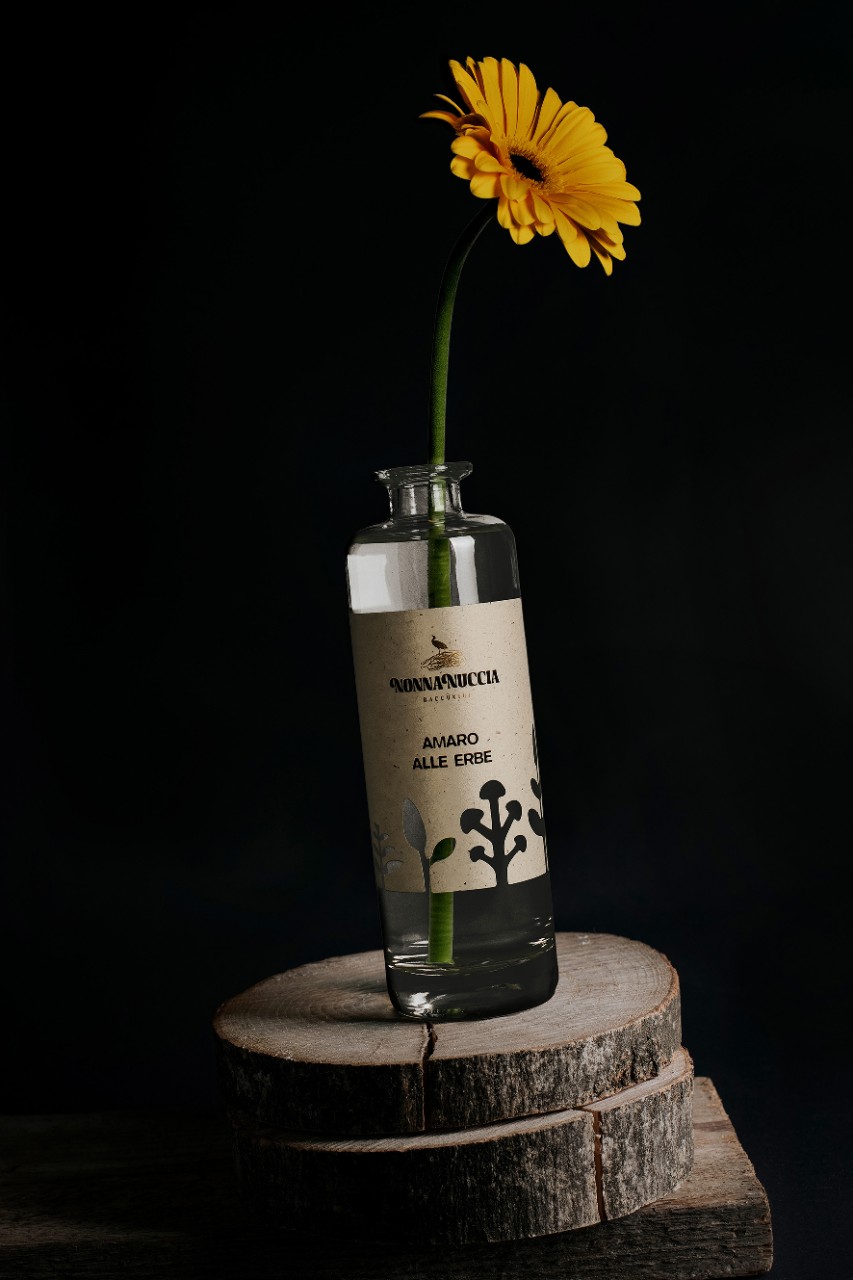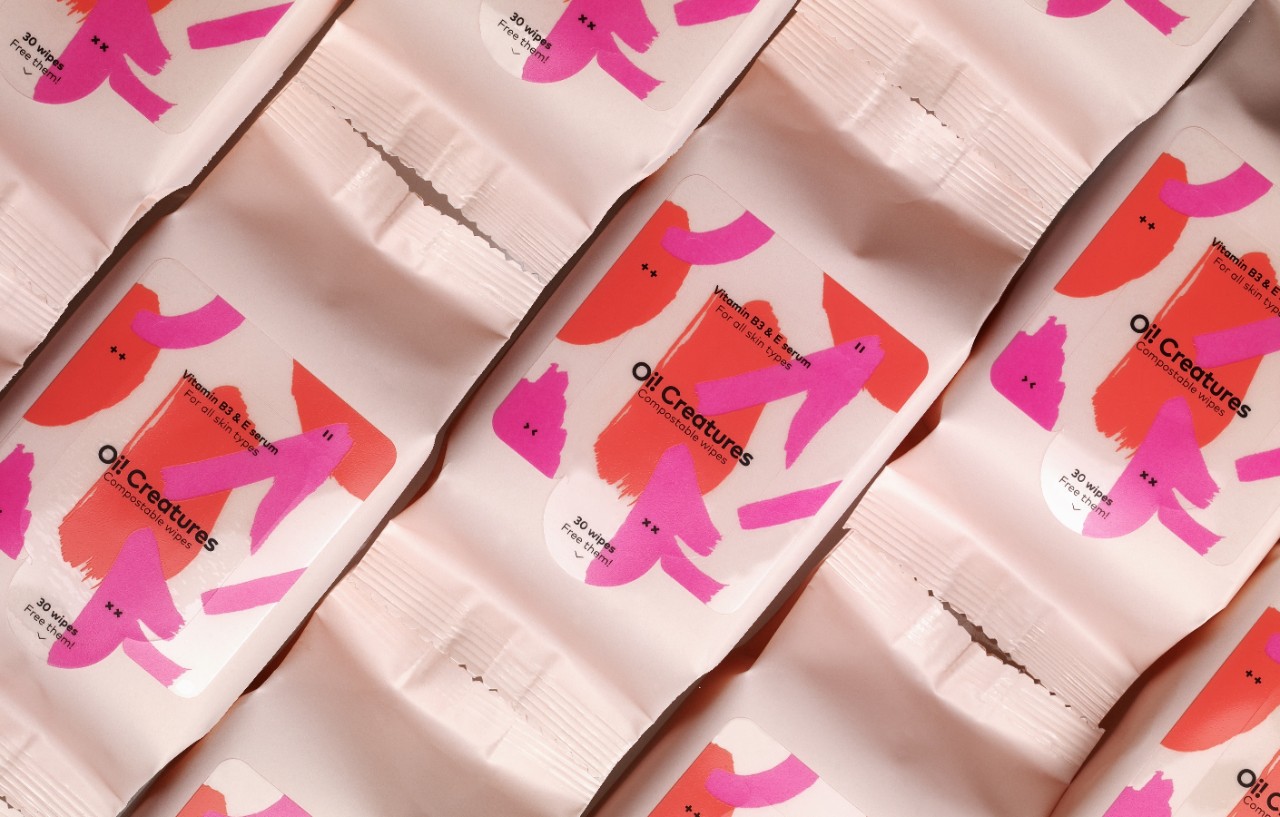Nonna Nuccia

Paying Homage To The Heritage Of Nonna Nuccia Through Eco Design
Italy is home to an array of liqueurs that can be consumed in many different ways and for a variety of occasions. One of them is the amaro, a liqueur made primarily from botanicals like herbs and with a history dating back to ancient Rome, where it was first consumed for its curative properties. By the mid-1800s, amaro - which means 'bitter', was widely available in Italian pharmacies as a health tonic. Nowadays, however, it is enjoyed as an after-dinner digestive.
For more than 30 years, Nonna Nuccia has been making amaro in the heart of Racconigi. The brand, which is owned by Giovanni Barra and his mother Nuccia Barra, collaborated with the ‘Wine Stylist ’ Cristina Ciamporcero to design a label that pays homage to its origins while also incorporating its ingredients artistically.
"I wanted to create a label that complemented the liqueur content", says Cristina Ciamporcero, who has worked with brands of the same genre for over 20 years. “Inspired by paper origami, I used flowers and herbs in the label design in order to give the impression that they are real components of the liqueur”.
As an artisanal amaro, Nonna Nuccia wanted to convey all of its essences in a simple and transparent manner for the consumer. In keeping with the message of transparency, Nonna Nuccia chose a clear bottle with a label that is digitally printed, hot foil stamped, and has decorative die-cutting. It is this die-cutting of flower stems that brings the notion of transparency and the liqueur's content together beautifully.
When designing beverage labels, many factors must be taken into account. These factors will usually influence the choice of paper for the labels, and Nonna Nuccia's amaro is no exception. When asked about the choice of paper, Cristina Ciamporcero explained, “I was looking for a paper that resonated with nature and also worked well in the refrigerator, since the liqueur should be consumed very cold, but without ice.” After considering numerous choices, she decided that Avery Dennison’s Fasson® rFleury Chêne FSC® was the perfect solution. This matte paper has a tactile handmade look and feel, making it ideal for artisanal brands like Nonna Nuccia. Additionally, it is made from 30% recycled fibers, features fungicidal and wet strength treatments, and, thanks to its PLUS construction, prevents edge-lifting and the formation of bubbles and pleats (which usually results from temperature changes). Thus, it is perfectly suited for storing beverages such as amaro in cold and sometimes wet conditions, as these treatments ensure that the labels don’t get moldy and can tolerate condensation. “Additionally, the off-white and wood-flecked label complements the amber color of the liqueur and makes it aesthetically pleasing”, adds Christina Ciamporcero.

While admiring the label design, some may be curious as to what the Nonna Nuccia logo, which illustrates a stork in her nest, signifies. “Racconigi, the town from which our brand originates, is a well-known destination for storks to reproduce”, says Giovanni Barra, Owner of Nonna Nuccia. “As you stroll through the streets of the center, you will often see chimneys with storks' nests on top, and we wanted to pay tribute to our beautiful town by using this narrative in our brand”.
Photographer Leonardo Bonato, who was commissioned by the brand, masterfully captured all of these thoughtful elements. The photographs have a rustic Italian tone that wonderfully suits the brand and shows off its creative design, in addition to reflecting the liqueur's heritage. Interestingly, when designing the product, the brand intended to place reusability at the center of the overall design, which led to the selection of a tall, sleek, and stylish bottle. "We want to emphasize that after the contents of the bottle have been consumed, the bottle may have a second life," Christina Ciamporcero adds. "It can easily be repurposed as a vase for a single flower, which complements the flower stem die-cuts and adds a visual effect." As such, the Fasson® rFleury Chêne FSC® PLUS proves useful in protecting the bottle and label from water spills during its second life as a vase.
Beyond the narrative that the design conveys, Nonna Nuccia hopes to also add an entertainment element to its liqueur. While some herbs, such as sage, can be tasted, the rest can be identified in a 'guess the herb’ game'. "We use a total of 9 herbs, all of which are meticulously picked by hand in the Racconigi fields. The recipe is a closely guarded secret, so we encourage consumers to indulge after dinner, have a good time, and see if they can figure out what the hidden herbs are," Giovanni Barra concludes.



